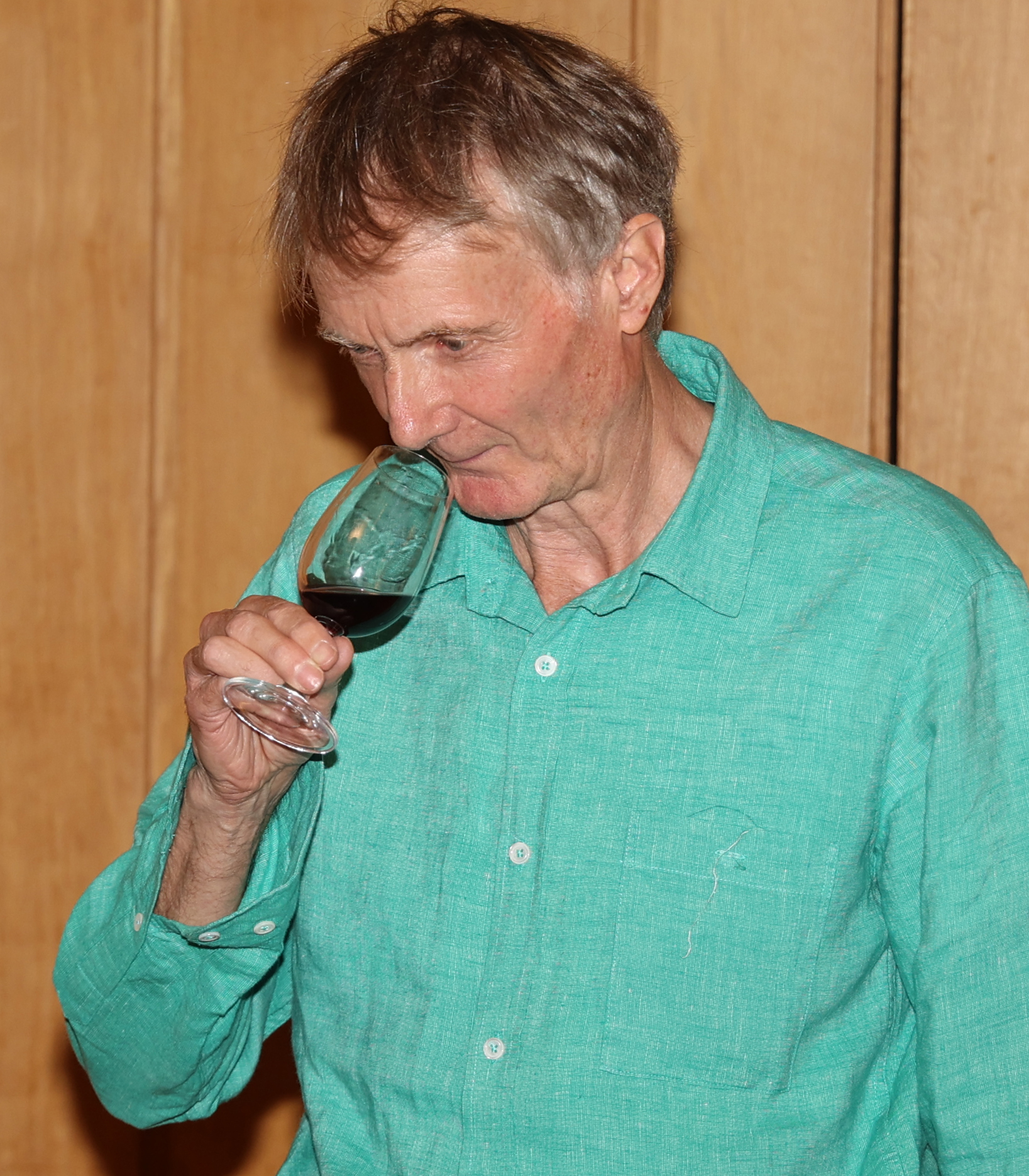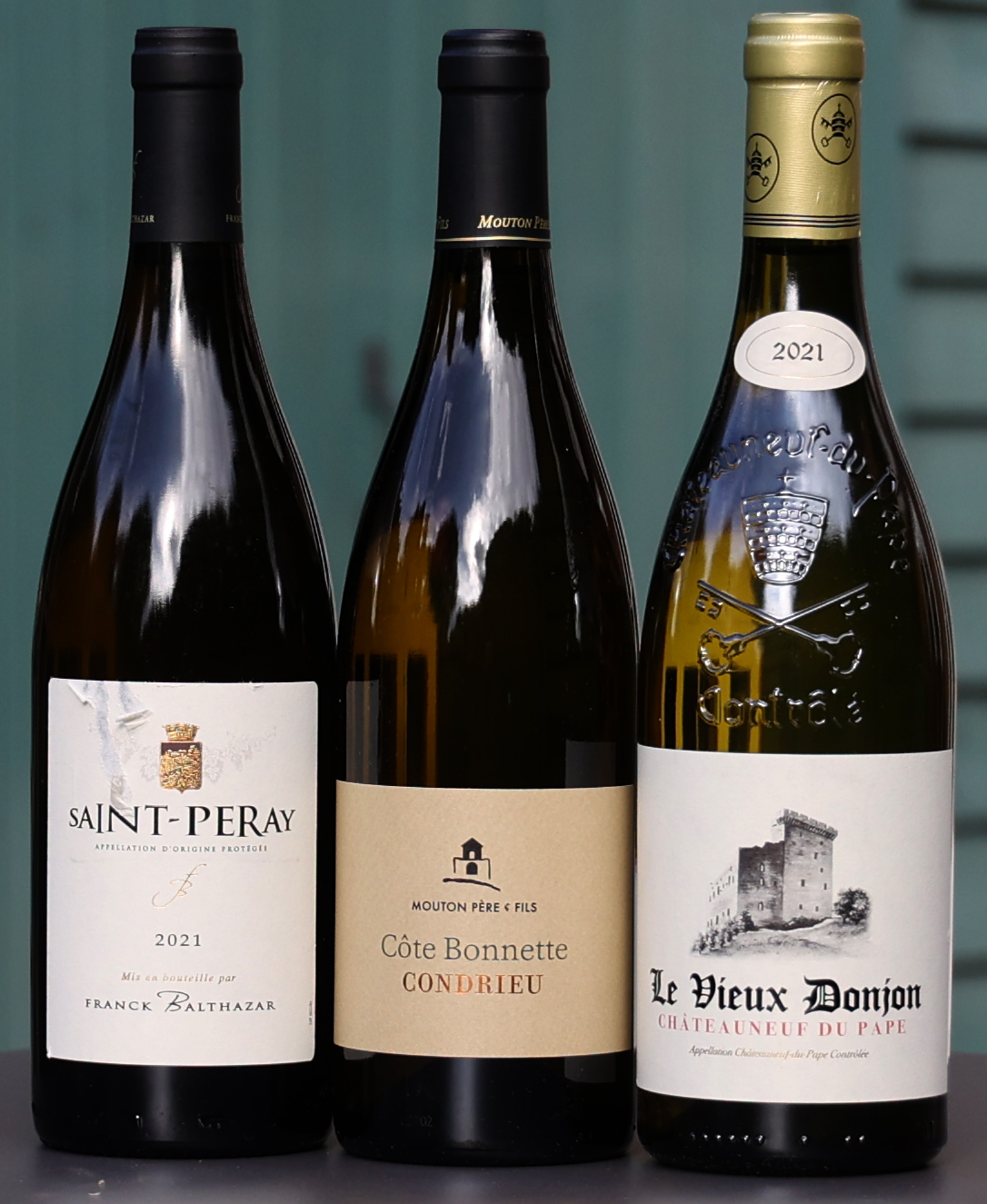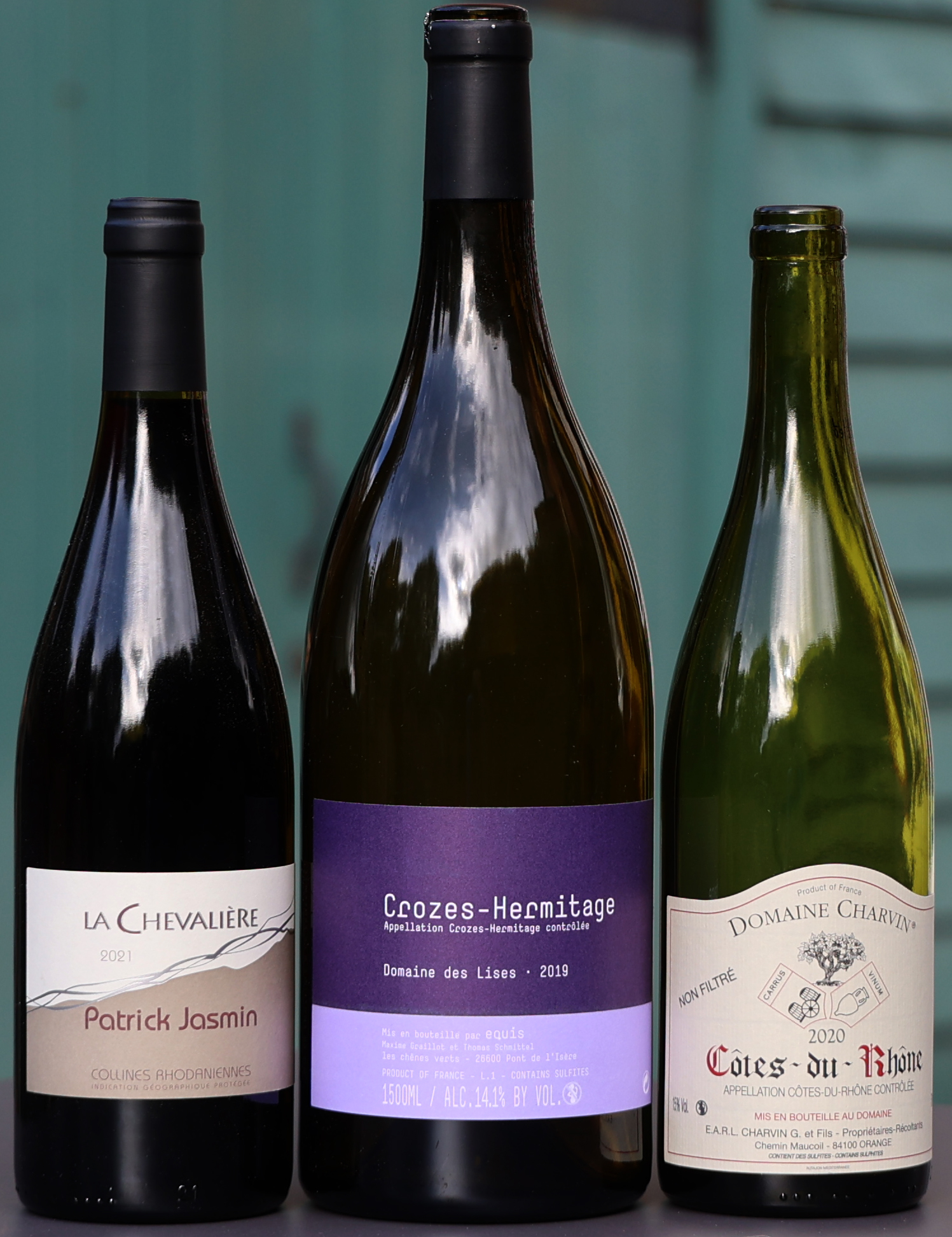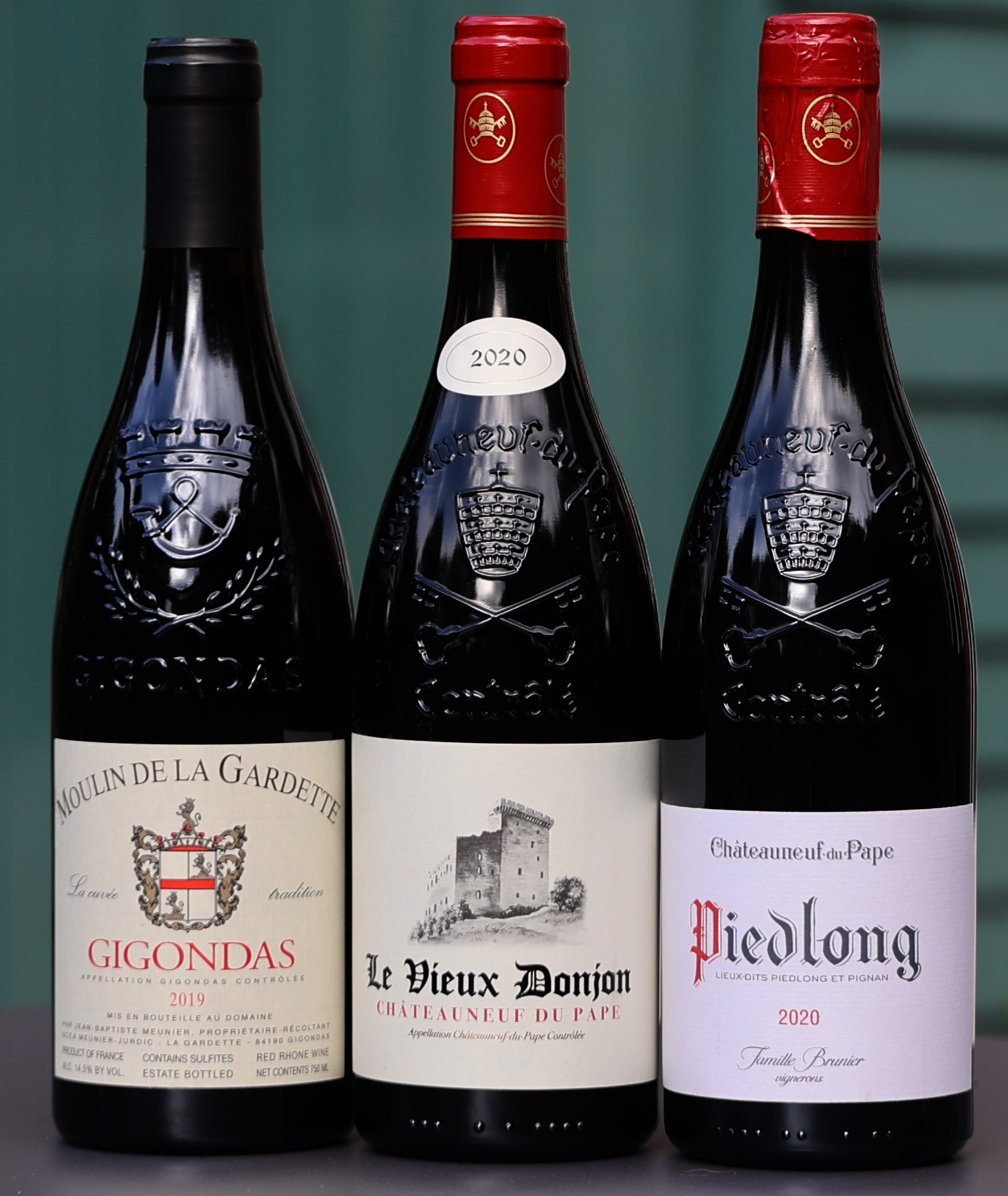 John Livingstone-Learmonth’s tasting of the wines of the Rhône at St Cross on 19th September was remarkable for its passion, its erudition and the quality of the wines he showed. Rightly this was a full house of members – over 70 in total – a tribute to the man and his subject.
John Livingstone-Learmonth’s tasting of the wines of the Rhône at St Cross on 19th September was remarkable for its passion, its erudition and the quality of the wines he showed. Rightly this was a full house of members – over 70 in total – a tribute to the man and his subject.
It was also, we learnt, something of a fifty-year anniversary. On 21 June 1973 he travelled from Aix-en-Provence to meet Marcel Chapoutier. The Union Jack flew over the premises and John was first taken into the vineyards before tasting first a 1961 Chante-Alouette and second a 1947 Hermitage Blanc. This ‘coup de foudre’ started a dedication to the Rhône and its wines that has lasted a lifetime. He was then an aspiring journalist, finding sources by the simple expedient of going into local bars at lunchtime and asking if anyone made wine. He found vignerons who had been born before World War One; he made enduring friendships. In retrospect it was a ‘magic moment’ before marketing and selling dominated minds.
His first book, Wines of the Rhône, (bashed out on an Olivetti Lettera 22 just like Len Deighton’s Ipcress File) was co-written with Melvyn Master, but it was John who persuaded Charles Monteith of Faber & Faber to publish the book that made this 25-year-old’s reputation. He held other jobs such as selling Black and White whisky in Africa and Latin America, but it was wine that had him in its grip.
He remains a one-man band. No ‘underlings’ doing the tasting; no-one else deputed to talk to the ‘people in the vineyards’. As several of his stories suggested, he’s fiercely independent in his judgments, quite prepared to call out producers whom he thinks are letting themselves and their customers down. If that means they try to ‘run him out town’ then so be it. But, as one Southern Rhnôe producer found out, that’s tricky since John is now a ‘Citoyen d’Honneur of Châteauneuf-du-Pape. Instead he ‘put his skates on and got better’ – as our tasting confirmed.
When John started working on the Rhone it was somewhat unregarded as a producing area. Now it is ‘economically sustainable’ and includes areas such Crozes-Hermitage, supposedly the most profitable appellation in France thanks to its blend of high allowable yields and easy working conditions. Meanwhile, the ‘flames of demand’ are licking round the Northern Rhône. A small amount of wine from the Southern Rhone is distilled but overall the area is in good shape. The region has outlasted the Robert Parker effect and, as our tasting showed, the best wines now stress elegance rather than power and balance (that ‘alpha and omega’ of all good wines) has regained its status.
Almost all recent vintages have been good. The 2021, in particular, is felt by John to have been the ‘best Châteauneuf-du-Pape white vintage of my life’. We tasted three wines that reinforced his point.
First up was Franck Balthazar’s 2021 St Péray at £26.50 from BBR – for which see https://www.bbr.com/products-20218151452-2021-st-peray-franck-balthazar-rhone. Franck is a friend of John’s – and a neighbour since John himself has vines in Cornas. This 100% Roussanne comes from a tiny plot of 0.31 ha of ten-year-old vines (‘un jardin’), producing only 2000 bottles a year. The 400 metres of altitude and limestone soil guarantee freshness in this 12% ‘aperitif wine’. Medium gold in colour, fragrant with a hint of salinity and a satisfying mouthfeel. ‘Clarity’ and ‘restraint’ were the words John used to sum it up. This could age 4-5 years perhaps – and John made the general point that the longer Rhone whites age the more exotic they become.
has vines in Cornas. This 100% Roussanne comes from a tiny plot of 0.31 ha of ten-year-old vines (‘un jardin’), producing only 2000 bottles a year. The 400 metres of altitude and limestone soil guarantee freshness in this 12% ‘aperitif wine’. Medium gold in colour, fragrant with a hint of salinity and a satisfying mouthfeel. ‘Clarity’ and ‘restraint’ were the words John used to sum it up. This could age 4-5 years perhaps – and John made the general point that the longer Rhone whites age the more exotic they become.
Wine no 2 was Domaine Mouton’s Côte Bonnette 2021 Condrieu (https://www.bbr.com/products-20211134720-2021-condrieu-cote-bonnette-domaine-mouton-rhone). 100% Viognier but though apricot was the first fragrant note, there was apple and peach too – and none of the blowsiness that mars so many of today’s Viogniers. Definitely ‘not standard issue’ Condrieu this. White pepper on the nose plus white fruits and a touch of tobacco. This wine weighs in at 14% and glycerol gives it that oily texture – and its capacity to age. Right now, this wine is compact, dense, even stubborn but it will unfold over the next few years and could easily continue to develop for a decade or more. It’s handled in 300 litre oak casks (20% new each year). This was universally liked by members, even though wine no 3 just shaded it as the white wine of the evening.
Wine no 3 was Le Vieux Donjon Blanc of 2021 (see https://www.yapp.co.uk/chateauneuf-du-pape-le-vieux-donjon-blanc-2021). 50/50 Clairette and Roussanne from a single hectare of 1990s plantings that produce some 3500 bottles of this stunning 15% wine. The varieties are picked 12 days apart (Roussanne before the slower ripening Clairette) and handled in steel – no oak. Today these wines are handled more gently than in the past: pressed more lightly to minimise tannins, and a halt to bâtonnage since sufficient richness is not an issue here. Malolactic was blocked in 2021 to maintain freshness. The result is a soft, welcoming wine with saline length and white flower aromas. ‘Rock and roll and finesse’ was John’s pithy summary.
On to the reds…
 We started with Patrick Jasmin’s 2021 ‘La Chevalière’ (https://www.yapp.co.uk/igp-collines-rhodaniennes-patrick-jasmin-la-chevaliere-2021), classified IGP des Collines Rhodaniennes since the vines grow on the plain outside the Côte Rôtie appellation area. This is 100% Syrah, yet ‘delicate’ and ‘pretty in the best sense’, though liable to get lost in mass tastings and at 12% alcohol would certainly not have been to the taste of Robert Parker (that ‘good American boy who liked sugar and exaggeration’). But, ‘energy-giving’, perfect for ‘steak frites’ and a dab of garlic. It evolved in the glass though – as several members testified.
We started with Patrick Jasmin’s 2021 ‘La Chevalière’ (https://www.yapp.co.uk/igp-collines-rhodaniennes-patrick-jasmin-la-chevaliere-2021), classified IGP des Collines Rhodaniennes since the vines grow on the plain outside the Côte Rôtie appellation area. This is 100% Syrah, yet ‘delicate’ and ‘pretty in the best sense’, though liable to get lost in mass tastings and at 12% alcohol would certainly not have been to the taste of Robert Parker (that ‘good American boy who liked sugar and exaggeration’). But, ‘energy-giving’, perfect for ‘steak frites’ and a dab of garlic. It evolved in the glass though – as several members testified.
Wine no 5 was Domaines de Lises 2019 from Crozes-Hermitage (https://www.yapp.co.uk/crozes-hermitage-rouge-alain-graillot-2020). Alain Graillot has 6 ha of clay and limestone soil by the Hill of Hermitage and the 2019 (warmer and drier than 2021) gave the wine plenty of weight and 14% alcohol. We drank from magnums which age more slowly and benefit from double decanting to lose that reductive tang (think sol and damp earth). In the southern Rhône Syrah can go a bit jammy; here it was laden with black fruit, warm and welcoming without losing its fine tannin structure or its composure. This would happily age for a decade or more – and John told stories of recently drunk bottles of Crozes going back into the 1960s.
From Crozes-Hermitage we moved to a 2020 Côtes du Rhône from Domaine Charvin (https://www.vinetrail.co.uk/growers/domaine-charvin/domaine-charvin-cotes-du-rhone). 81% Grenache (some from hundred-year-old vines) with 10% Syrah. 5% Mourvèdre / Mataro and 4% Carignan making up the balance. The Syrah adds colour and tannins; the Mourvèdre length, firmness, colour and a liquorice note. 15% alcohol with spicy fruit and lots of concentration. For John this was a wine that still needed time to come together. ‘Unfinished business’ as yet was the verdict … but give it time.
Wine no 7 was Moulin de la Gardette Tradition of 2019 from Gigondas (https://www.vinetrail.co.uk/growers/moulin-de-la-gardette/gigondas-2017-tradition). 80% Grenache (again) but now paired with 10% Cinsaut and 10% Mourvèdre. Moulin de la Gardette’s vineyards are in the clear air in the lee of the Dentelles de Montmirail, though lower down the slopes to get the herby /spicy notes form the ‘garrigue’. Gigondas was promoted from ‘village’ status only in 1971; kept at bay by the protectiveness of Baron Le Roy of Châteauneuf-du-Pape who saw it as a threat. This example showed why – lots of exuberant brambly fruits with a touch of menthol and pine on the nose and red / black berry fruited palate to carry its 14.5% of alcohol. For John this a wine from his ‘W-O-W’ category – ‘what one wants’. Versatile, easy to drink with a wide range of foods. Jean-Baptiste Meunier is a ‘discrete’ producer, allowing the wine to come together in old oak foudres rather than rushing or attempting to show off.
Moulin de la Gardette’s vineyards are in the clear air in the lee of the Dentelles de Montmirail, though lower down the slopes to get the herby /spicy notes form the ‘garrigue’. Gigondas was promoted from ‘village’ status only in 1971; kept at bay by the protectiveness of Baron Le Roy of Châteauneuf-du-Pape who saw it as a threat. This example showed why – lots of exuberant brambly fruits with a touch of menthol and pine on the nose and red / black berry fruited palate to carry its 14.5% of alcohol. For John this a wine from his ‘W-O-W’ category – ‘what one wants’. Versatile, easy to drink with a wide range of foods. Jean-Baptiste Meunier is a ‘discrete’ producer, allowing the wine to come together in old oak foudres rather than rushing or attempting to show off.
Last up was a pair of Châteauneuf-du-Papes from 2020. The first we tasted was Le Vieux Donjon Rouge (https://www.yapp.co.uk/chateauneuf-du-pape-le-vieux-donjon-rouge-2020); the second Piedlong from Domaine du Vieux Télégraphe (https://www.bbr.com/products-20208136949-2020-chateauneuf-du-pape-piedlong-famille-brunier-rhone ). 2020 was a ‘kindly’ year for growers – no mildew and not too hot. Both were raised in similar fashion though the blends were slightly different: the Vieux Donjon 75% Grenache, 10% each of Syrah and Mourvèdre and 5% Cinsaut whilst the more immediately approachable Piedlong was 90% Grenache and 10% Mourvèdre but for John, the real difference was in the soil. The Piedlong Grenache is grown on sand (a pairing ‘made in heaven’), whereas the Vieux Donjon is grown on galets giving a darker wine from older vines that at this stage of its development – decades to come of course – felt more closed and brooding. At this point the 14.5% Piedlong was characterised by red fruit freshness (redcurrants and cherries?) and fine tannins, and beautiful balance and finesse. The Vieux Donjon, which is slightly weightier at 15%, shows more spice and leather right now, and still needs a bit of time to allow the fruit to come through as it will. A fascinating pair of wines to finish with indeed.
The members’ votes for their favourite red were fairly evenly balanced but the Piedlong finished top with some 20 hands raised in support against 16 for the Gigondas and 14 for the Domaine de Lises.
Giving a deeply felt vote of thanks, Richard Liwicki summed up the tasting perfectly: great wines, passion, deep knowledge, and great stories.
A memorable treat for those who attended and our regrets that we had to turn away some later-booking members and their guests.
GH: 20/9/23